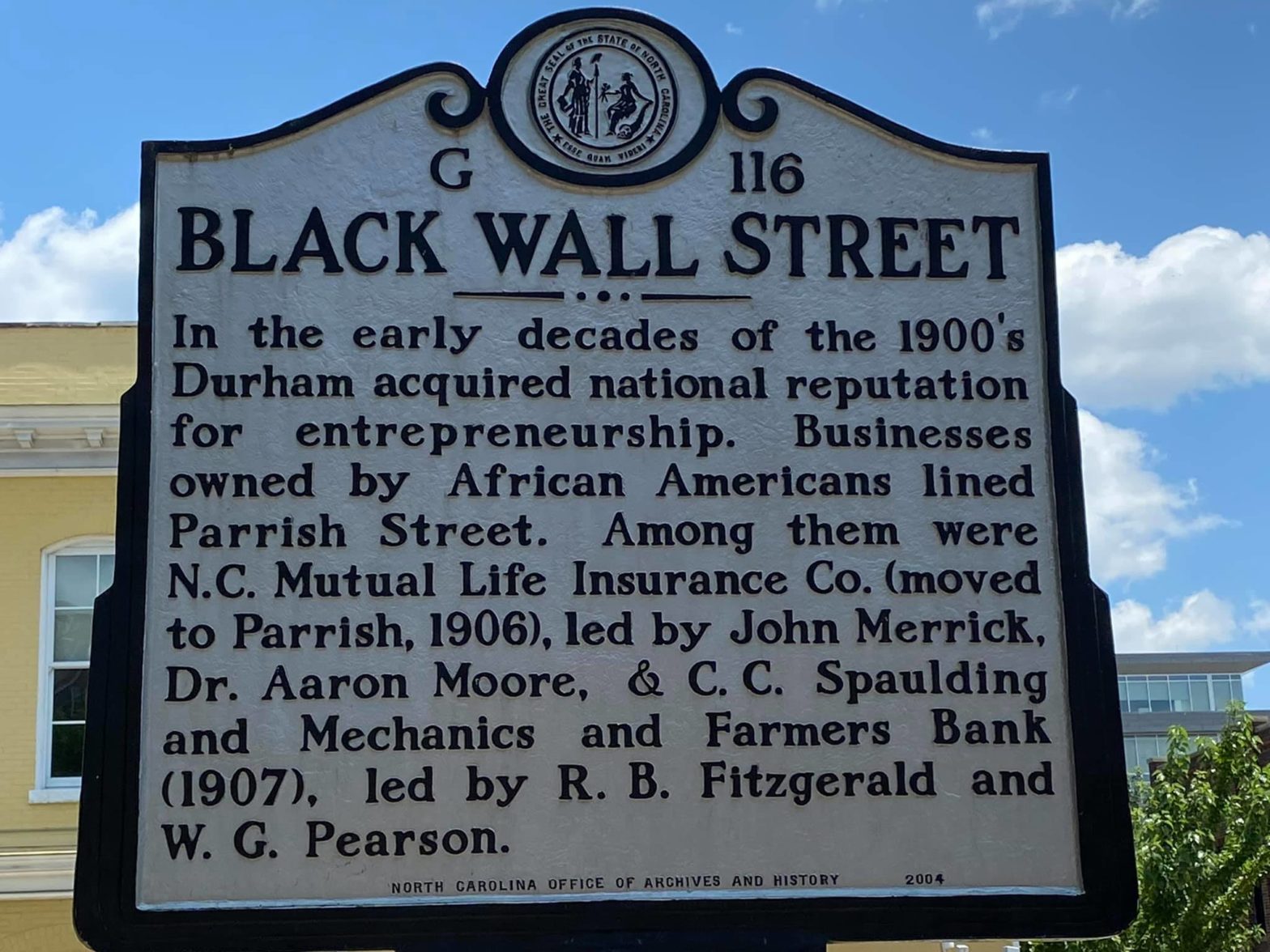Once upon a time in the 20th Century, Parrish Street was considered Black Wall Street in Durham, North Carolina.
Historical records from the North Carolina Office of Archives and History reveal the approximately four-block-Black-commercial district was developed in the early 1900s.
It all began when John Merrick, Dr. Aaron Moore, and C. C. Spaulding, known as the “Triumvirate” in charge of the nation’s largest Black-owned insurance company, North Carolina Mutual Life Insurance Company, moved their headquarters to Parrish Street in 1906.
They were later joined by R. B. Fitzgerald and W. G. Pearson, who co-founded Mechanics and Farmers Bank in 1907.
This Black business district received praise from leaders like Booker T. Washington and W.E.B. Du Bois.
During a visit in 1912, Du Bois recorded what he observed as an unparalleled level of Black entrepreneurship with North Carolina Mutual spearheading such achievements.
He attributed the success of Black businesses to the tolerant attitude of the city’s whites writing, “it is precisely the opposite spirit in places like Atlanta.”
Historians agree that the three most successful and notable Black business enclaves were in Durham, Tulsa, and Chicago.
Durham’s Parrish Street created a thriving middle class of African Americans during a time when white mob violence tore down southern cities like Wilmington, North Carolina, and the infamous Tulsa massacre.
It also served as inspiration for Black Americans outside of the city.
A 1928 article in St. Luke’s Herald, a Black-owned weekly publication in Richmond, Virginia stated:
“Go to Durham […] You need the inspiration. Go to Durham and see Negro business with an aggregate capital of millions. Go to Durham and see twenty-two Negro men making modern history. Among your New Year’s resolves, resolve to go to Durham.”
“If we think about what we consider to be Wall Street now, we think about capital. We think about access to capital. And that’s what Durham had in ways that many other places didn’t have,” Henry McKoy, former assistant secretary of commerce for North Carolina and director of entrepreneurship at North Carolina Central University’s School of Business, told NPR.
Parrish Street flourished for nearly seven decades before the construction of the Durham Freeway and other “urban renewal” and highway construction projects harmed historically Black neighborhoods.
Constriction also destroyed Durham’s Hayti neighborhood— a historically African American community established by freedmen after the Civil War during this same time.
A plaque is all that remains there today, honoring the four-block district that influenced Black Americans stretching miles and generations away.





